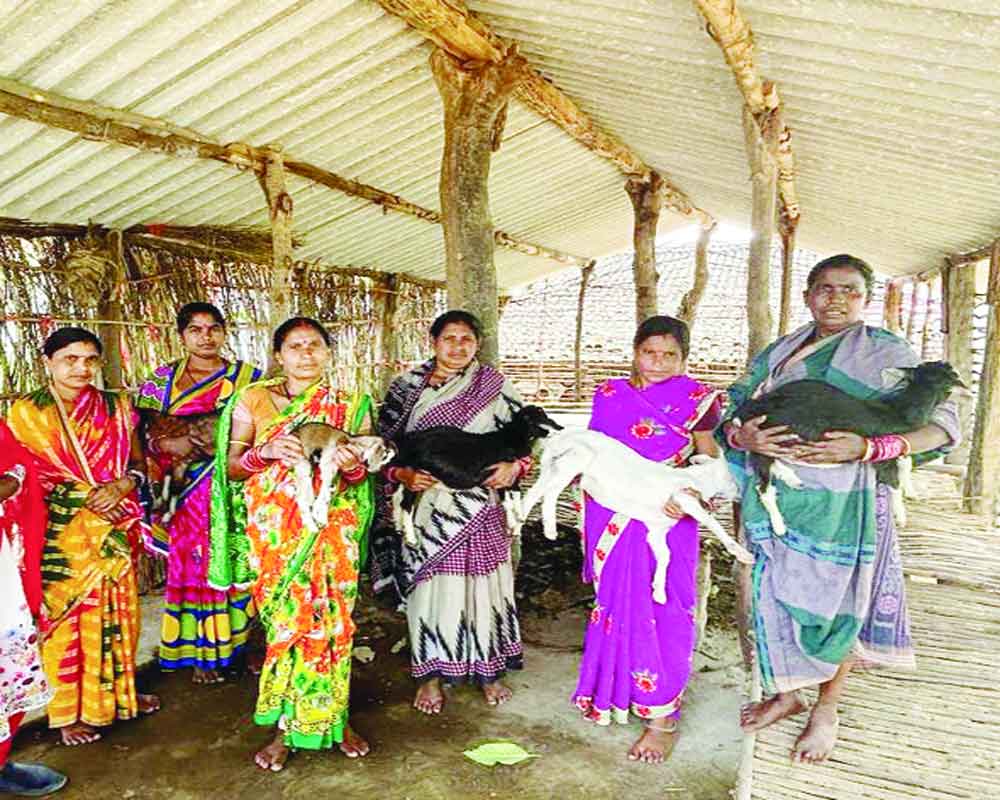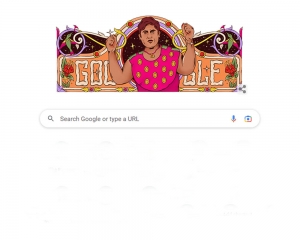Despite its significant contribution to the economy, the goat sector largely operates in the informal market, underscoring the need for greater recognition
In a remarkable feat of rural innovation, Kalahandi couple Jayanti Mahapatra and Biren Sahu have earned praise from Prime Minister Narendra Modi for their groundbreaking agri-tech startup located in the remote Salebhata village. Their unique Goat Bank, recognised in 'Mann Ki Baat,' breaks traditional banking norms, empowering local farmers and uplifting the community's socio-economic status through innovative rural solutions.
Goats often referred to as the "ATM" or "poor man’s cow," play a pivotal role in India's livelihoods and nutritional security. Their popularity stems from factors such as low capital investment, adaptability, early maturity, prolific breeding, superior chevon quality, and steady returns. Amid changing agro-climatic conditions, goats emerge as the 'Future Animal' for national prosperity. Goat meat commands a premium in the market and goat milk offers therapeutic benefits. Despite constituting 27.80 per cent of the total livestock and contributing significantly to the national economy with annual revenue of Rs 38,590 crores, the goat sector often operates in the informal and untaxed market. The goat, however, deserves serious attention and investment. Contributing 3% of milk, 13.8% of goat meat, and 0.18 million tonnes of skin in India, goats have immense economic potential. As goat farmers strive for financial inclusion, recognising and investing in the goat sector can lead to substantial economic upliftment, making it imperative for the goat to take centre stage in national agricultural and economic planning.
Traditionally, successful livestock development strategies have heavily relied on providing credit to empower underprivileged individuals to acquire or replenish their livestock. This not only marks the initial foray into livestock ownership but also serves as a pivotal step towards breaking free from the shackles of poverty, paving the way for a more secure and prosperous life. In the evolution of livestock development strategies, the traditional reliance on credit to empower underprivileged individuals has given rise to an innovative approach embodied by the Goat Bank.
Welcome to the innovative realm of the Goat Bank, where farming dreams come alive with a unique twist. Instead of conventional cash, the bank offers aspiring farmers a lifeline in the form of a pregnant female goat. It's not a giveaway; a deal is struck. Deserving farmers receive guidance on scientific goat rearing, along with support for vaccinations, deworming, ear tagging, and premium concentrate feed during pregnancy. In return, farmers commit to caring for the goats and returning six to eight kids to the Goat Bank.
The math magic unfolds as goats, with a 7 to 8-month kidding interval, yield two or three kids in each kidding cycle. Over two years, farmers find themselves with an impressive twelve to fourteen kids from just two does. Beyond personal gain, these farmers extend the goat family, nurturing them and, when the time is right, selling them for a lucrative profit. This cycle of goat generosity creates a symbiotic relationship, with benefits flowing from the Goat Bank to the farmers and ultimately reaching the market. It's a win-win scenario, shaping a pathway for sustainable farming practices and economic prosperity.
In Maharashtra's Akola district, Naresh Deshmukh's visionary Goat Bank, launched in July 2018, redefines empowerment. Aspiring farmers pay a nominal Rs 1,200 registration fee, entering into a loan agreement to return four lambs within 40 months.
This innovative scheme fosters accountability, propelling a sustainable growth cycle. Women participating in goat rearing anticipate significant profits, enabling investments in land, and education, and celebrating life's milestones.
In Salebhata village, Kalahandi district of Odisha, the Goat Bank, spearheaded by Jayanti Mahapatra and Biren Sahu, offers needy farmers two adult female goats, hailing from the resilient breeds of native Kalahandi or Black Bengal. During two years, the goats exhibit their prolific nature, birthing impressive 9-10 kids. The bank retains six of these newborns, channelling the rest back to the same families dedicated to goat farming. This sustainable cycle has now woven a network connecting 1,000 farmers across 50 villages.
In the undulating agro-climatic expanse of western Odisha, encompassing Kalahandi and Nuapada districts, the author's research illuminates a striking reality: 95% of goats thrive as indigenous, hardy, uniquely adapted to endure temperatures soaring up to 48°C.
These robust creatures are meticulously managed in modest holdings under semi-extensive systems, relying solely on roadside grass and tree leaves as their primary sustenance, achieving impressive average adult body weights of 35 kg for males and 30 kg for females. The elegance of this agricultural practice lies in its simplicity, relying on family labour and minimal investment, mainly directed towards veterinary care. Farmers, with negligible expenditure, witness substantial profits.
The sale of castrated males after four years commands prices between Rs. 25,000 to 30,000, while females are priced slightly lower. During the Chatar Parab festival (a local festival), prices experience a commendable surge, contributing to an annual income of approximately Rs. 100,000 from goat sales.
Through extensive interviews, the author uncovers a burgeoning interest among landless farmers to engage in goat rearing, signalling a desire for expansion. However, these aspiring farmers articulate a need for essential elements like proper housing, quality feed, and a superior breeding buck to unleash the full growth potential of their goat herds.
While existing state government schemes provide very good assistance to many goat farmers in this zone, the author still posits that pioneering initiatives like a goat bank have the potential to include more landless, downtrodden farmers in the journey. Such innovative concepts could substantially contribute to the financial stability and prosperity of a broader section of farmers, offering a promising avenue for uplifting native goats and enhancing the overall well-being of the farming community in the area.
The success stories from Salebhata village in Kalahandi and Sangavi Mohadi village in Maharashtra illustrate how the Goat Bank is not merely an institution but a catalyst for positive change. As Prime Minister Narendra Modi rightfully recognises the transformative power of such initiatives, it becomes evident that the goat, often overlooked, deserves centre stage as a species worthy of serious investment. The Goat Bank model showcases a sustainable cycle of growth, from the bank to the farmers and eventually to the market, fostering economic upliftment and financial inclusion.
The Goat Bank revolution is not just about goats; it's about changing lives, revitalising rural economies, and creating a blueprint for similar innovations across the country.
As more farmers join such schemes and receive the support they need, the potential for further improvement of goat farming practices in native tracts becomes promising. The winds of change are indeed blowing, and the resonant call for serious attention and investment in the goat sector is no longer a distant bleat but a reality that holds the promise of a brighter and more prosperous future for rural India.
(The writer is a scientist at Odisha University of Agriculture & Technology, Bhawanipatna; views are personal)


























